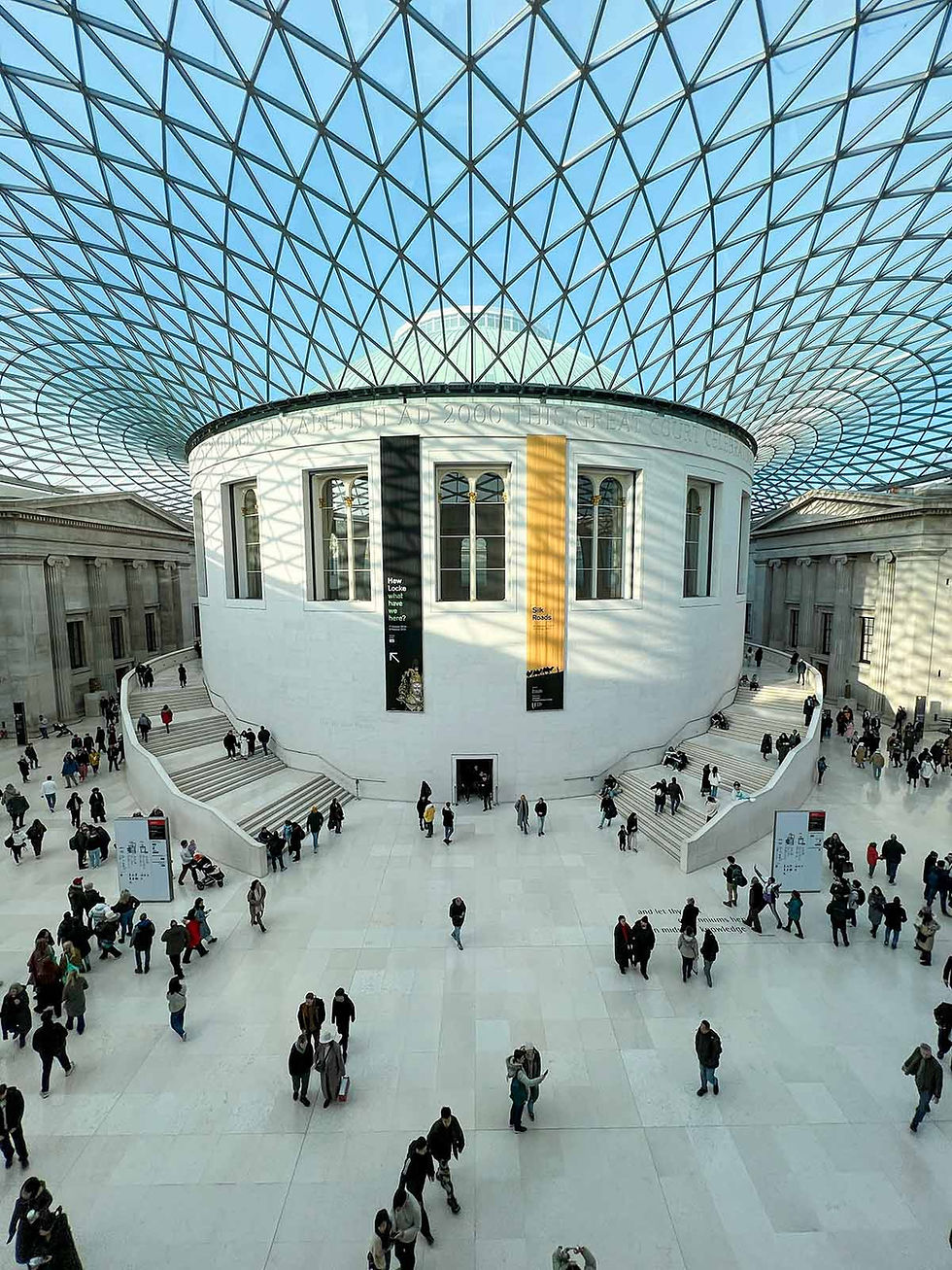The city with a village vibe
- Jan Johannessen

- Nov 14, 2023
- 8 min read
Updated: Jan 4, 2025

It is a former Hanseatic port, a UNESCO World Heritage Site and a gateway to the majestic fjords. Even though nearly 300.000 people populate Norway's second-largest city, it has a cosy village atmosphere. And you do not need a rental car to make the most of it.
Advertisement
Advertisement
In 1070, King Olav Kyrre founded Bergen as a trading centre for the west coast of Norway. It soon became a flourishing city, attracting merchants from Norway and abroad.
In the 14th century, the German Hanseatic League established a trading office on the waterfront, known as Bryggen, and dominated the commerce of the North Sea for centuries. It was the largest city in the Nordics until the 17th century. Fires often ravaged the city, but it rebuilt itself with characteristic wooden houses and colourful roofs.
Today, Bergen is a vibrant city with a rich cultural and artistic scene and stunning natural surroundings. You can explore the town's historical and architectural heritage, enjoy the lively fish market, visit the museums and galleries, and take the funicular or cable car to the nearby mountains for panoramic views and hiking trails. You can also take a boat trip to the nearby fjords, such as the Sognefjord and the Hardangerfjord, and marvel at the scenery of waterfalls, glaciers and quaint villages.
Advertisement
Advertisement
Here are thirteen must-sees and dos when visiting Bergen, the capital of the west coast of Norway.
Bryggen

The historic harbour district of Bergen, Bryggen, is a UNESCO World Heritage Site and one of the city's most iconic sights. You can stroll along the narrow alleys and admire the wooden houses that date back to the Hanseatic era. You can also visit the Hanseatic Museum and Schøtstuene, which display the history and lifestyle of the merchants who lived and worked here.
Fløibanen Funicular

This is a fun and easy way to get to Mount Fløyen, one of the seven mountains surrounding Bergen. The funicular takes you from the city centre to 320 meters above sea level in just a few minutes. From there, you can enjoy a spectacular view of the city and the fjord or explore the network of hiking trails and the recreational area.
Bergen Aquarium

If you are interested in marine life, visit the Bergen Aquarium. The aquarium has more than 60 tanks that display a variety of fish, reptiles, amphibians and invertebrates from Norway and other parts of the world. You can also see penguins, seals and crocodiles and watch feeding shows and presentations.
Advertisement
Advertisement
Bergenhus Fortress

It is one of Norway's oldest and best-preserved fortresses, dating back to the 13th century. Bergenhus Fortress has several buildings, such as the Håkon's Hall, the Rosenkrantz Tower and the Christ Church. You can take a guided tour of the fortress and learn its history and legends.
KODE Museums

This is a collective name for four art museums in the city centre along the Lille Lungegårdsvann Lake. The museums have a large and varied collection of paintings, sculptures, drawings, prints, crafts and designs from the Middle Ages to the present day. You can see works by famous Norwegian artists such as Edvard Munch, Nikolai Astrup, Harriet Backer and J.C. Dahl, and international artists such as Pablo Picasso, Paul Klee, Joan Miró and Francis Bacon.
.
Mount Ulriken

Mount Ulriken has an altitude of 643 meters, the highest of the seven mountains surrounding Bergen. You can reach the summit by taking the Ulriken cable car, which offers a stunning view of the city and the fjord. At the top, you can visit the Sky:skraperen restaurant and bar, which serves local food and drinks, or join a guided hike or a zipline adventure.
Advertisement
Advertisement
Old Bergen Museum

This is an open-air museum that recreates the atmosphere of Bergen in the 18th and 19th centuries. The museum has more than 50 wooden houses. All houses were initially located in different parts of the city before moved here to the museum. You can walk around the streets and squares and see how people lived and worked in the old days. You can also meet actors who dress up as historical characters and tell stories about their lives.
Fantoft Stave Church

Fantoft Stave Chruch was first built in the small village of Fortun, Sogn, in 1150, but 1883 it was moved to Fantoft. Unfortunately, it was destroyed by a fire in 1992, allegedly caused by arson. The church was rebuilt in 1997, using the original design and techniques. The church is a fine example of Norwegian wooden architecture, with elaborate carvings and decorations.
Bergen Fish Market

One of the most popular and lively places in Bergen, Bergen Fish Market, is where you can buy and taste fresh seafood. The fish market is located in the city's heart, next to the harbour, and has been operating since the 13th century. You can find a variety of fish and shellfish, such as salmon, cod, herring, crab, lobster and shrimp, and have them cooked on the spot or take them away.
Advertisement
Advertisement
Bergen Kunsthall

This contemporary art museum showcases the works of local and international artists and hosts exhibitions, concerts, lectures, and workshops. The museum is in a former bank building from the 1930s, renovated and expanded with a modern extension. The museum has a permanent collection of more than 1,500 works and changing exhibitions of various genres and media.
Bergen Cathedral

The main church of Bergen has a history that goes back to the 12th century. The church has been rebuilt and renovated several times and has various styles, such as Romanesque, Gothic and Baroque. The church has a rich interior, a carved pulpit, an organ, stained glass windows and paintings. The church is also the venue for concerts and events, especially during the Bergen International Festival.
Edvard Grieg Museum Troldhaugen

The former home of Edvard Grieg, Norway's most famous composer, and his wife Nina is located in a scenic area by the Nordås Lake, and it has been preserved as it was when the Griegs lived there. You can see their personal belongings, such as furniture, instruments, paintings and letters. You can also visit the composer's hut, where he wrote some of his most famous works, and his grave by the water.
Advertisement
Advertisement
Bergen Botanical Garden

This beautiful and peaceful garden belongs to the University of Bergen. The garden has over 5,000 plant species from different regions and climates, such as alpine, arctic, Mediterranean and tropical. You can see flowers, trees, herbs, fruits, vegetables and more. You can also visit the greenhouses with exotic plants such as orchids, cacti and carnivorous plants.
How to travel to Bergen

By plane
Bergen has an international airport, Flesland, about 20 km from the city centre. You can fly to Bergen from many domestic and foreign destinations, such as Oslo, Copenhagen, London, Amsterdam and Paris.
You can get from the airport to the city by bus, light rail, taxi or rental car.
By train
Bergen is the terminus of the Bergen Line, one of the most scenic railway routes in the world. The train connects Bergen with Oslo, the capital of Norway, and passes through spectacular landscapes of mountains, valleys, lakes and fjords. The journey takes about 7 hours, but you can also stop at intermediate stations like Voss, Myrdal and Finse. You can also take the Flåm Railway, a branch line from Myrdal to Flåm, a village by the Aurlandsfjord. The Flåm Railway is one of the world's steepest and most beautiful railway lines, and it takes about an hour to cover the 20 km distance.
By ferry
Fjord Line operates a daily service between Bergen and Hirtshals. The ferry terminal in Bergen is located in the Nøstet area, near the city centre.
Advertisement
Advertisement
How to get around Bergen without a car
Bergen is a compact and walkable city; you can easily explore most of the attractions and sights on foot. However, if you want to venture further or save time and energy, you can also use Bergen's public transportation system, which consists of buses and light rail.
Bus
The buses in Bergen cover a vast network of routes and destinations, both within and outside the city. You can find the bus stops and timetables on the Skyss website or app, or use the Skyss Reise app to plan your journey and buy tickets. You can also purchase tickets from the ticket machines at some bus stops or from the driver with cash or a card. The buses run from early morning to late night, and some routes have night buses on weekends⁸.
Bybanen
The light rail in Bergen, also known as Bybanen, is a modern and comfortable way to get around the city. The light rail runs from the airport to the city centre. The light rail has 28 stations, and you can find the map and timetable on the Skyss website or app or use the Skyss Reise app to plan your journey and buy tickets. You can also purchase tickets from the ticket machines at the stations. The light rail runs from early morning to late night and has a higher frequency during peak hours.
Bergen Card
With the Bergen Card, you can travel for free with buses and light rail in Bergen and Vestland county disciplines. You can also use the Bergen Card to get discounts or free admission to many museums, attractions and activities in the city. You can buy the Bergen Card online or at the tourist information centre.
Advertisement
Advertisement
When is the best time to visit Bergen?

Bergen is a year-round destination, and each season has charm and attractions. Here are some pros and cons of visiting Bergen in different seasons:
Spring (March to May)
Spring is a lovely time to visit Bergen, as the city comes alive with flowers, greenery and sunshine. You can enjoy the cherry blossoms around the Lille Lungegårdsvann lake, the tulips at the Bergen Botanical Garden, and the rhododendrons at the Arboretum and Botanical Garden. You can also celebrate the Norwegian Constitution Day on May 17th, when the city is filled with parades, flags, music and festivities. You can also join the Bergen International Festival, Norway's most significant cultural event, featuring music, theatre, dance, opera and art.
Summer (June to August)
Summer is the peak season in Bergen and the most popular time to visit. You can enjoy the long days and the bright nights and experience the vibrant and lively atmosphere of the city. You can explore the stunning scenery and nature of the fjords, mountains and islands and try outdoor activities like hiking, biking, kayaking and fishing. The weather in summer is warm and sunny, with average temperatures ranging from 13°C to 20°C, but you can also have some hot days up to 25°C or more. However, summer is also the wettest season in Bergen, and you can expect some rain and thunderstorms.
Advertisement
Advertisement
Autumn (September to November)
Autumn is a beautiful time to visit Bergen, as the city is painted with fall foliage colours. You can admire the red, orange and yellow leaves at the parks and the hills and enjoy the crisp and fresh air. You can catch some of the festivals and events in autumn, such as the Bergen Food Festival, the Bergen International Film Festival and the Bergen Philharmonic Orchestra concerts. The weather in autumn is cool and variable, with average temperatures ranging from 10°C to 16°C, but you can also have some frosty and snowy days.
Winter (December to February)
Winter is a cosy and festive time to visit Bergen, as the city is decorated with lights, candles and Christmas markets. You can enjoy the winter wonderland of snow and ice and experience the Norwegian traditions and customs of the holiday season.



















